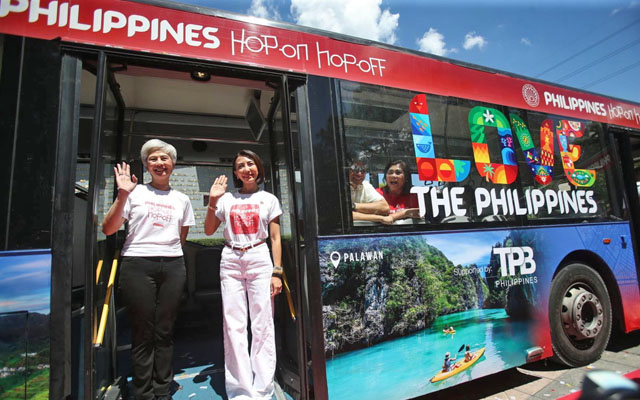Optimize Exposure with Transit Advertising Philippines
Comprehending the Role of Transportation Marketing in Enhancing Brand Visibility and Consumer Engagement
Transportation marketing has arised as a pivotal element in the advertising and marketing landscape, providing unique opportunities for brand names to boost their presence and involve consumers effectively. With the ability to reach a restricted and varied target market during their everyday commutes, these advertising methods are not merely regarding presence; they have to do with producing purposeful connections with prospective consumers. As we explore the diverse advantages and cutting-edge methods within transportation advertising and marketing, it becomes important to consider how these aspects jointly influence consumer understanding and behavior, increasing inquiries concerning their long-term effect on brand name commitment.
Definition of Transit Marketing
Transit advertising describes the technique of promoting products, services, or brand names through ads positioned around mass transit systems. This kind of marketing encompasses a selection of positionings, including posters on trains and buses, digital screens at transportation stations, and covers on the outside of cars. It aims to get to a diverse target market, utilizing on the high foot traffic related to public transit.
Transportation marketing is purposefully positioned to capture the interest of commuters, that typically invest significant time taking a trip or waiting. By integrating advertisements right into the daily regimens of individuals, brand names can develop a long lasting impression and foster brand name recognition. The tool is especially efficient in urban atmospheres, where public transport is a primary mode of traveling.
In addition, transit advertising and marketing can facilitate localized targeting, permitting companies to get to details demographics based on transportation courses and station locations. As metropolitan populaces expand and making use of public transport boosts, this advertising and marketing method has actually gained importance as an essential component of incorporated advertising and marketing techniques. The vibrant nature of transportation advertising and marketing, combined with its ability to engage consumers in a captive environment, highlights its relevance in modern advertising and marketing practices.
Advantages of Transportation Marketing
The efficiency of transit advertising and marketing lies in its capacity to deliver a multitude of benefits to brand names seeking to enhance exposure and engagement. One of the primary benefits is the considerable reach it supplies; transportation advertisements can successfully target varied demographics across urban locations, getting to both pedestrians and commuters alike. This broad direct exposure significantly enhances brand name understanding.
One more benefit is the high regularity of perceptions. As transit vehicles follow well established paths and stop at multiple areas, they produce repeated exposure that enhances brand messages. This frequency cultivates experience, which is essential in consumer decision-making.
Transit advertising and marketing is likewise cost-effective contrasted to other media systems. Provided its large reach and capacity for high impressions, brand names typically experience a reduced price per thousand perceptions (CPM), optimizing their marketing budget.
In addition, transit advertisements can create a feeling of area connection. By straightening with regional transit systems, brands can reverberate with local target markets and promote a sense of local satisfaction. This local technique boosts brand name loyalty and interaction, making transit marketing a compelling selection for businesses aiming to strengthen their visibility in the market.

Efficient Techniques for Transportation Projects
To make the most of the effect of transit campaigns, brands must take advantage of calculated preparation and execution tailored to their target market. Initially, determining the market qualities of the audience making use of public transportation is vital. This enables brands to develop tailored messaging that reverberates with prospective clients.
Next, selecting the appropriate transportation tools is necessary. Whether making use of bus covers, metro posters, or digital screens, each medium has distinct advantages that can boost presence. For example, dynamic visuals on bus wraps can stand out, while digital advertisements can be upgraded regularly to show timely promotions.
In addition, incorporating a natural branding approach throughout transit platforms ensures uniformity and strengthens the brand name's identity. Making use of distinctive styles and memorable taglines will enhance brand recall among travelers.
Finally, timing is an essential consider performing successful transit projects. Introducing projects during height travel hours or neighborhood events can significantly boost visibility and involvement. By utilizing these strategies, brands can properly harness the potential of transportation marketing, cultivating greater awareness and connection with their target market. Ultimately, a well-executed transportation campaign can drive significant development in brand presence and customer interaction.

Determining Influence and Engagement
In evaluating the efficiency of transit ad campaign, accurate dimension of impact and interaction is important for brands seeking to useful content optimize their marketing approaches. Metrics such as reach, frequency, and impacts supply foundational information to analyze visibility. Assessing these elements aids determine the number of possible consumers are exposed to the promotions throughout their daily commutes.
Interaction can be further evaluated via customer communications, such as web site web traffic, social media sites discusses, and direct actions to calls-to-action included in the ads. Using tools like QR codes or unique URLs can assist in monitoring of consumer habits straight linked to transportation projects. Studies and responses mechanisms also function as beneficial techniques to gather qualitative data on customer understandings and recall of the promotion.
Additionally, progressed analytics and acknowledgment models can associate transit direct exposure with succeeding buying actions, offering understandings right into the roi. By employing an extensive approach that integrates measurable and qualitative steps, brands can develop a nuanced understanding of their transportation advertising and marketing influence. Ultimately, this data-driven method allows brand names to refine their projects, guaranteeing they resonate successfully with target market and enhance overall brand exposure.
Instance Research Studies of Effective Campaigns
Effective transportation marketing campaign act as compelling examples of how efficient methods can raise brand name exposure and engagement. Transit Advertising Philippines. One noteworthy case is the "I Love New York" project, which changed the city's image and attracted numerous visitors. By making use of subway advertisements, billboards, and bus covers, the campaign developed a solid, natural brand name identification, causing a considerable uptick in tourism and local business patronage
Another excellent project is Coca-Cola's "Share a Coke" effort, which leveraged transit advertising to personalize the brand experience. By featuring popular names on marketing materials throughout numerous transit platforms, Coca-Cola fostered a much deeper emotional connection with consumers, encouraging them to share their article experiences on social networks.
Additionally, the "Got Milk?" project successfully utilized mass transit ads to reach a wide audience, enhancing the message of the value of milk in a balanced diet plan. The project saw a measurable increase in milk consumption in target demographics.
These situation research studies illustrate that when performed thoughtfully, transportation advertising can dramatically enhance brand visibility, foster consumer engagement, and drive measurable results, demonstrating its vital function in modern-day advertising techniques. - Transit Advertising Philippines
Final Thought
In final thought, transit marketing offers as an important device for improving brand visibility and promoting consumer involvement. Ultimately, the ability to determine interaction and examine successful case studies emphasizes the effectiveness of transportation advertising and marketing in driving brand name commitment and consumer interactions.
Transportation marketing has actually emerged as an essential element in the advertising landscape, providing special chances for brands to boost their presence and engage consumers effectively.In addition, transportation advertising and marketing can assist in local targeting, allowing services helpful hints to get to particular demographics based on transportation courses and station places.In reviewing the effectiveness of transit advertising and marketing projects, accurate measurement of effect and involvement is important for brand names looking for to maximize their marketing methods.Effective transit advertising campaigns serve as engaging instances of just how effective strategies can elevate brand exposure and involvement.In final thought, transportation advertising and marketing serves as an essential device for enhancing brand exposure and fostering consumer interaction.